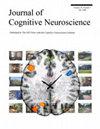Cross-sectional and Longitudinal Age-related Disintegration in Functional Connectivity: Reference Ability Neural Network Cohort
IF 3.1
3区 医学
Q2 NEUROSCIENCES
引用次数: 0
Abstract
Some theories of aging have linked age-related cognitive decline to a reduction in distinctiveness of neural processing. Observed age-related correlation increases among disparate cognitive tasks have supported the dedifferentiation hypothesis. We previously showed cross-sectional evidence for age-related correlation decreases instead, supporting an alternative disintegration hypothesis. In the current study, we extended our previous research to a longitudinal sample. We tested 135 participants (20–80 years) at two time points—baseline and 5-year follow-up—on a battery of 12 in-scanner tests, each tapping one of four reference abilities. We performed between-tasks correlations within domain (convergent) and between domain (discriminant) at both the behavioral and neural level, calculating a single measure of construct validity (convergent − discriminant). Cross-sectionally, behavioral construct validity was significantly different from chance at each time point, but longitudinal change was not significant. Analysis by median age split revealed that older adults showed higher behavioral validity, driven by higher discriminant validity (lower between-tasks correlations). Participant-level neural validity decreased over time, with convergent validity consistently greater than discriminant validity; this finding was also observed at the cross-sectional level. In addition, a disproportionate decrease in neural validity with age remained significant after controlling for demographic factors. Factors predicting longitudinal changes in global cognition (mean performance across all 12 tasks) included age, change in neural validity, education, and National Adult Reading Test (premorbid intelligence). Change in neural validity partially mediated the effect of age on change in global cognition. Our findings support the theory of age-related disintegration, linking cognitive decline to changes in neural representations over time.功能连接性的横向和纵向年龄相关解体:参考能力神经网络队列。
一些衰老理论认为,与年龄相关的认知能力衰退与神经处理的独特性降低有关。在不同的认知任务中观察到的与年龄相关的相关性增加支持了去分化假说。我们以前的横断面研究表明,与年龄相关的相关性反而下降了,这支持了另一种解体假说。在本研究中,我们将之前的研究扩展到了纵向样本。我们在两个时间点--基线和 5 年随访--对 135 名参与者(20-80 岁)进行了一系列测试,包括 12 个扫描仪内测试,每个测试针对四种参考能力中的一种。我们在行为和神经水平上进行了领域内(收敛性)和领域间(判别性)的任务间相关性测试,计算出了单一的建构效度(收敛性-判别性)。从横向来看,行为建构效度在每个时间点都与偶然性有显著差异,但纵向变化并不显著。按年龄中位数进行的分析表明,老年人的行为效度较高,这是因为他们的判别效度较高(任务间相关性较低)。随着时间的推移,参与者水平的神经效度有所下降,收敛效度一直高于判别效度;这一结果在横截面水平上也能观察到。此外,在控制了人口统计学因素后,神经效度随年龄不成比例的下降仍然显著。预测总体认知纵向变化(所有 12 项任务的平均成绩)的因素包括年龄、神经有效性变化、教育程度和全国成人阅读测试(病前智力)。神经有效性的变化在一定程度上调节了年龄对整体认知变化的影响。我们的研究结果支持与年龄有关的解体理论,该理论将认知能力的下降与神经表征随时间的变化联系起来。
本文章由计算机程序翻译,如有差异,请以英文原文为准。
求助全文
约1分钟内获得全文
求助全文
来源期刊
CiteScore
5.30
自引率
3.10%
发文量
151
审稿时长
3-8 weeks
期刊介绍:
Journal of Cognitive Neuroscience investigates brain–behavior interaction and promotes lively interchange among the mind sciences.

 求助内容:
求助内容: 应助结果提醒方式:
应助结果提醒方式:


